This blog is about food Camino de Santiago. About how and why we have to take care of it all day long and especially about how we can enjoy it even more. Gastronomy in the Camino de Santiago is essential. And an important part of an unforgettable walking or cycling experience. In general, however, little attention is paid to the food. And that’s a shame, because during your Camino de Santiago you can taste delicious local products, for example. That is why we want to pay specific attention to this subject in this blog about food on the Camino de Santiago.
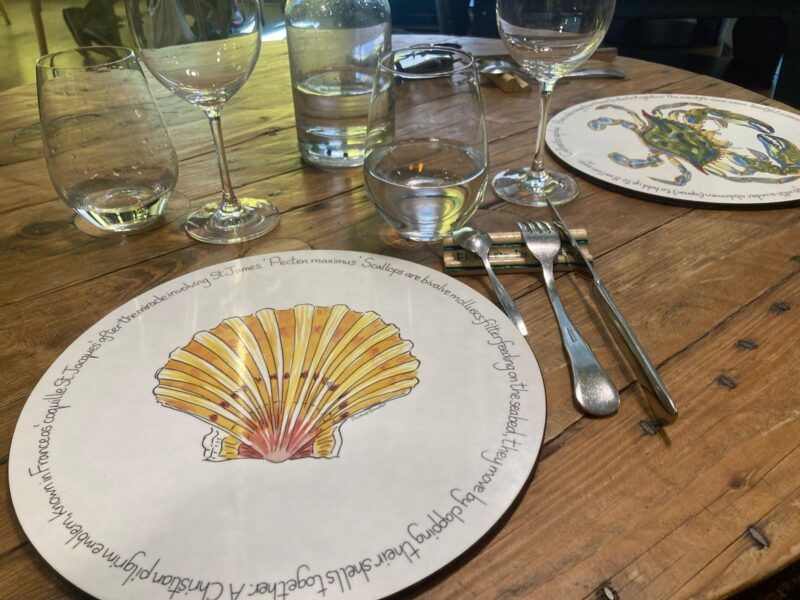
Discover food in the Camino de Santiago
Before delving into the specifics of each meal on the Camino de Santiago, it’s essential to understand why food plays such a crucial role in this journey. It not only provides the necessary energy for long walks or bike rides but also offers a unique opportunity to immerse oneself in the rich gastronomic culture of Spain’s diverse regions. From hearty breakfasts that set the tone for the day to dinners that become moments of social connection and enjoyment, every meal is an integral part of the Camino experience. Let’s start with breakfast, often regarded as the most important meal of the day, especially on a demanding journey like the Camino de Santiago.
1- The most important meal of the day
Food Camino de Santiago starts with a good breakfast. Our mothers also taught us this: the most important meal of the day is breakfast. And this applies even more to those who walk or cycle the Camino de Santiago. Nowadays there are people who have extensive breakfasts, but more often than not we live with little time and breakfast is limited to a quick coffee. Many people don’t even eat breakfast.
We know that skipping breakfast is not a good thing in everyday life, but on the Camino it just doesn’t work. You make a considerable physical effort every day, and it is essential to get enough energy. Without breakfast, or with a bad breakfast, there is a greater chance that we will run out of energy before the end of the stage.
Most accommodations on the Camino de Santiago are aware of this and give breakfast the value it deserves. For this reason, hostels as well as guest houses, inns and hotels usually offer a good breakfast. Generally this means that you can choose from different ingredients for Food Camino de Santiago.
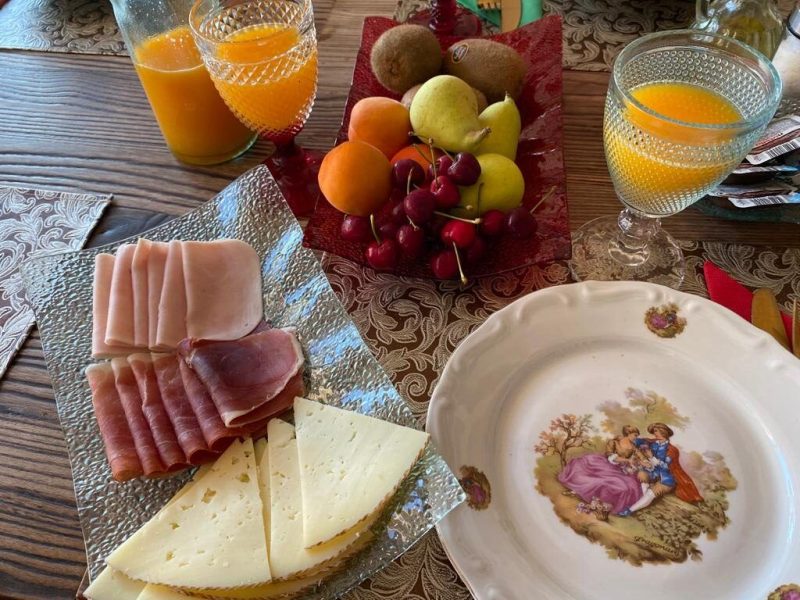
Always ask the night before what time breakfast starts, so that you can be sure that you can get something to eat before you start the stage. Usually they don’t serve breakfast before 7:30 am, which can be a problem if you want to start walking very early. Please note that meal times in Spain are slightly different: breakfast, lunch and dinner are usually later than we are used to.
Sometimes the accommodation may not offer breakfast. In these cases there is always a café nearby where you can have breakfast. Some pilgrims even prefer to walk a few kilometers before stopping for breakfast. In any case, it is important to avoid long distances without eating food.
Now the question is: what is an adequate breakfast for a pilgrim? Taking into account the physical effort you make, it is clear that a coffee or tea and a piece of toast will not be enough. However, it is also not recommended to eat too much, to avoid feeling heavy at the start of the stage or becoming nauseous.
When eating on the Camino de Santiago, at least make sure you eat enough protein-rich foods (ham and dairy products, such as cheese or yogurt) and natural sugars (fruit, jams without added sugars and natural juices), but also carbohydrates ( bread, toast and cereal) and some healthy fats (nuts or olive oil).
Tip for good food Camino de Santiago: a good breakfast can consist, for example, of toast with olive oil and ham, some cheese and a piece of fruit or fresh juice, accompanied by coffee or tea. Or breakfast cereal with yoghurt, a piece of fruit and some nuts. Preferably avoid industrial pastries, although many accommodations also offer homemade cookies or pastries that are difficult to resist.
2- Food Camino de Santiago: during the stage
Eating on the Camino de Santiago is also important along the way. As we have said, we use a lot of calories and after arriving we need to recover sufficiently for the next day. Our muscles recover not only by making stops, but also by drinking enough (more about this later) and eating. Along the Camino de Santiago you will find a large number of places where you can make these stops to regain your strength, from cafes and bars to rest areas and picnic areas. There may sometimes be a considerable distance between these facilities. So make sure you always have something in your backpack!
Nuts are always useful because they are easy to carry in your backpack and do not take up too much space. Almonds, cashews, walnuts, peanuts or pistachios are sold in most shops along the Camino de Santiago. But it is important to make sure they are raw or roasted, and not fried or sweet.
Cereal and granola based energy bars are also a good option as they contain carbohydrates that will give you a good dose of energy. Another alternative is fresh fruit, which provides a good dose of natural sugars that our body can easily convert into energy. Finally, there is also chocolate that you can eat on the Camino de Santiago. Although this is not the most recommended alternative. Because when it’s hot, it can melt.
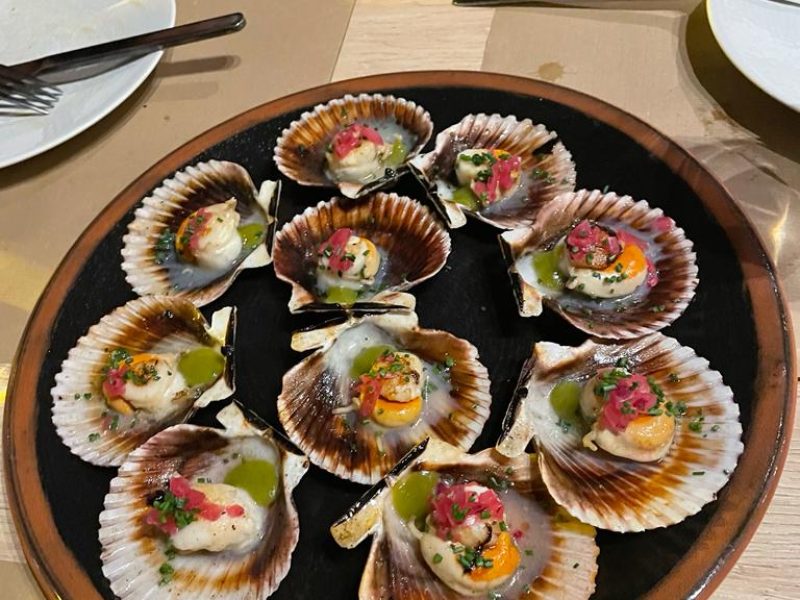
* We promise not to send spam. You can unsubscribe at any time.
3- Lunch: end of the stage or before continuing
Most pilgrims who walk the Camino de Santiago do stages of 20-30 km on foot (about 50-70 by bike), so they end the stage in the afternoon. As we have already said, people in Spain generally eat late, so if you arrive then you can still order a delicious lunch. Enjoying the gastronomic offer of each place is one of the greatest pleasures of the Camino de Santiago. Something we really deserve!
But it can also happen that we have not yet achieved the end goal of the day. And then we will have to adapt to the circumstances: if we still have to continue the Camino de Santiago, a light lunch is preferable and we will omit the heavier dishes.
As we follow the Camino de Santiago, you will discover a well-known phenomenon when it comes to food Camino de Santiago. Most restaurants offer a so-called “pilgrim menu”. This is usually an interesting and affordable option: you pay between 10 and 12 euros per person. The pilgrim menu usually consists of a starter, a main course and a dessert or coffee. A drink is also included.
The quality and variety of the dishes varies greatly from restaurant to restaurant, so it’s worth taking a look before making a choice. If you are a pilgrim who enjoys gastronomy, you may find this pilgrim menu too limited. Sometimes it is therefore better – especially if you are going to walk or cycle further – to order a single dish from the menu, or a house specialty.
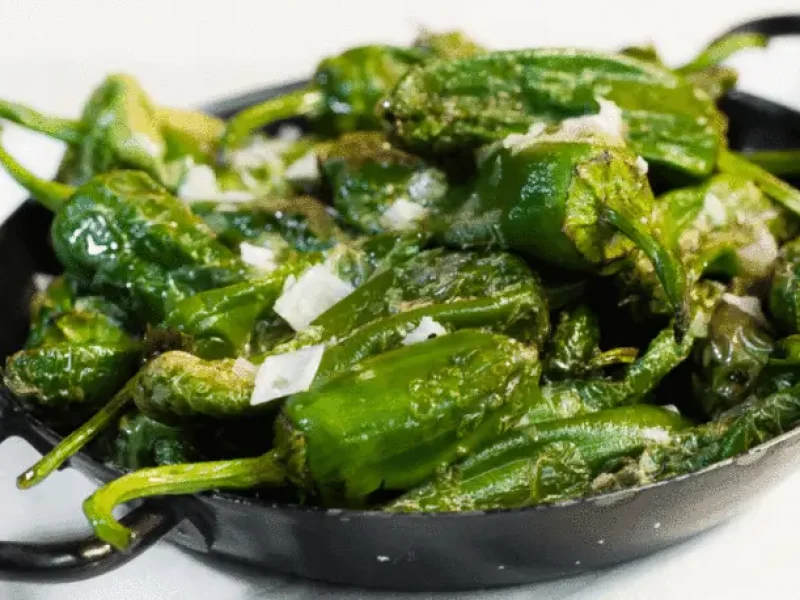
Please note that the Camino de Santiago crosses very diverse regions and gastronomy is one of the main cultural attractions. Choosing local and seasonal products when eating on the Camino de Santiago is something we always highly recommend.
4- Dinner: a time to enjoy
As we mentioned, it is common for dinner to become the main meal of the day when food Camino de Santiago. There are good reasons for this: we are rested, we don’t have to worry about walking or cycling further afterwards and we also have more time, which usually translates into long meals with other people who are on pilgrimage just like us . Eating together on the Camino de Santiago is accompanied by stories and anecdotes. Some hostels offer the opportunity to have a joint dinner with all pilgrims who spend the night there.
In addition, it is the perfect time to try most of the area’s popular and traditional dishes. Vegetables from Navarra, pil pil cod from the Basque Country, vine chops from La Rioja, Castilian garlic soups, Asturian fabada, octopus from Melide, the bacalhau à brás Portuguese, the pimientos de Padron, etc. These are just a few examples of a much more varied offer. The truth is that all the areas crossed by the different routes of the Camino de Santiago have their own gastronomy.
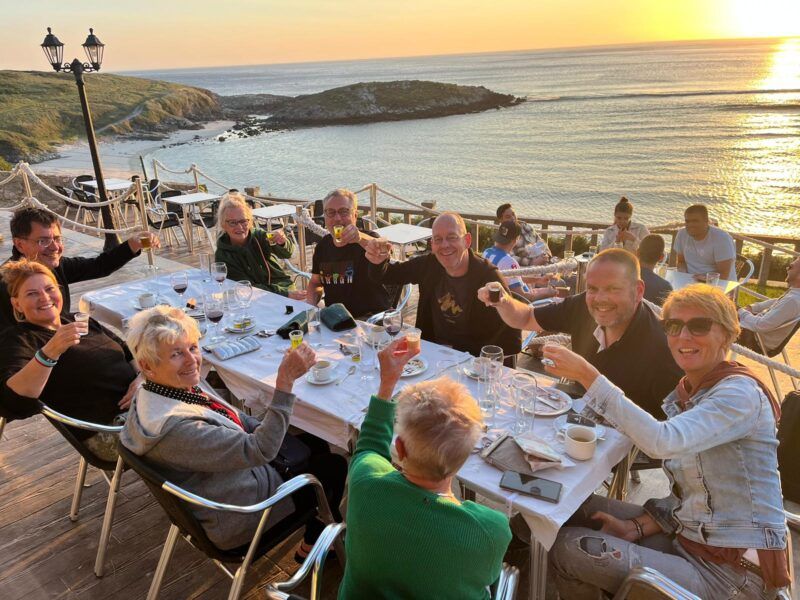
The same goes for wines, beer and other alcoholic drinks, which are not recommended during the stage (due to the dehydrating properties of alcohol), but are certainly recommended with dinner. Such as the Albarino wine or the wine from Rioja. Estrella Galicia is the local beer from Galicia that is also worth tasting.
Again, check the opening hours carefully. In Spain it is very rare to have dinner before 9pm, and many restaurants don’t open their doors until 8pm, so for many people coming from other countries it is late. Especially if you have to get up early the next day.
5- Make sure you drink enough during the Camino de Santiago
Finally, we would like to emphasize that, in addition to food Camino de Santiago, it is also important to stay hydrated. When walking or cycling we sweat and lose fluid quickly, so it is important to replenish this as well.
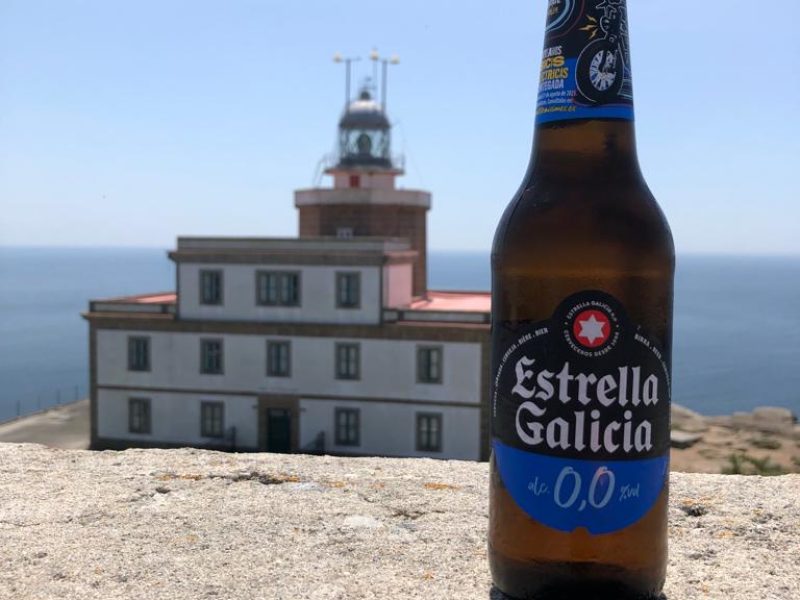
Food Camino de Santiago considers also liquids. As for liquids, energy drinks (hypertonic) are increasingly used. Although these may contain substances that are problematic for some people (such as caffeine or taurine), they do have an anti-fatigue effect.
It is preferable to consume rehydration drinks (isotonic or even slightly hypotonic), which aim to promote the absorption of water and usually contain substances such as minerals, magnesium, amino acids, slowly absorbable carbohydrates and vitamins. And don’t forget water, which is the easiest and best option. You can drink water from bottles as well as from springs and fountains that you encounter along the way.
Culminating Your Culinary Camino Journey
As you conclude your exploration of the Camino de Santiago’s culinary landscape, it becomes evident that the food you encounter is more than mere sustenance. It’s a key component of the pilgrimage experience, offering a taste of the local culture and tradition at every turn. From the first energizing bite of breakfast to the last sip of a regional wine at dinner, each meal on the Camino is an opportunity to connect with the land, the people, and the spirit of Spain. Embracing the local cuisine enriches your journey, turning it into a voyage of gastronomic discovery as well as a physical and spiritual adventure.
Savoring Every Step
Your journey along the Camino de Santiago is a path of diverse flavors and culinary experiences, each contributing to the richness of your adventure. As you savor local dishes and refreshments, remember that these are the flavors that have fueled pilgrims for centuries. Whether you’re enjoying a simple yet hearty breakfast or indulging in a regional specialty for dinner, these meals are a significant part of what makes the Camino de Santiago unforgettable. As you reflect on the journey and the foods that have accompanied you, it’s clear that the Camino offers nourishment for the body, mind, and soul. Buen Camino and buen provecho!


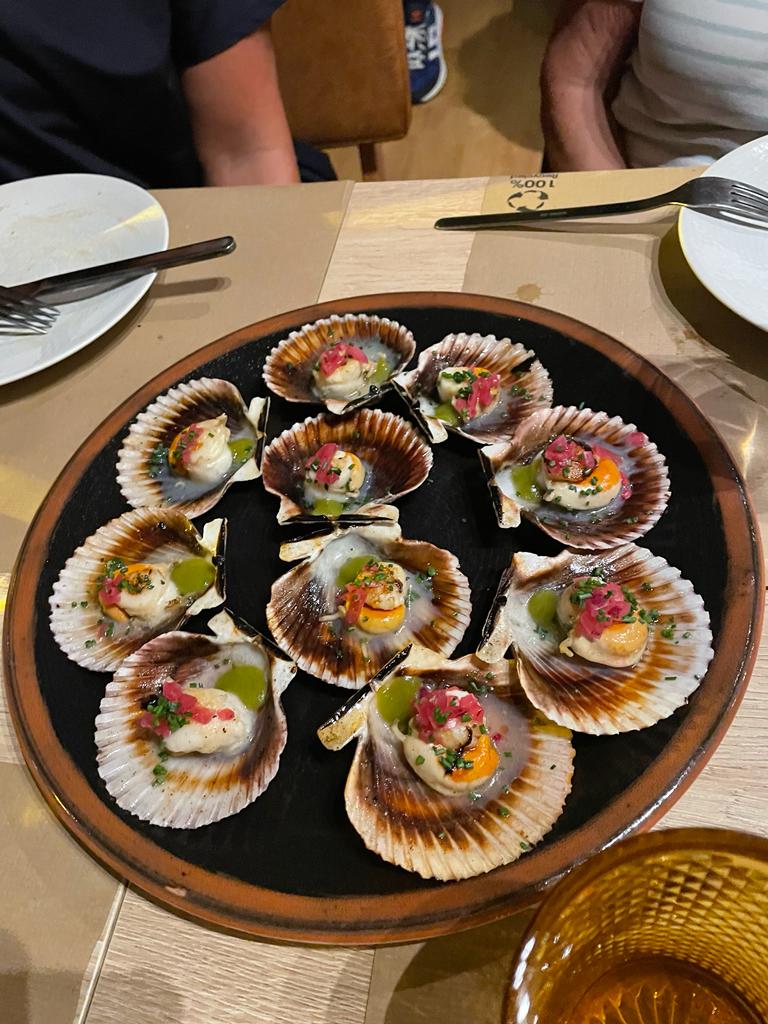
Comment (0)